Python에서 super() 함수의 __init__() 메서드를 사용하는 방법은 무엇입니까?
- WBOYWBOYWBOYWBOYWBOYWBOYWBOYWBOYWBOYWBOYWBOYWBOYWB앞으로
- 2023-04-27 10:13:132508검색
super().__ init__ () 용도는 무엇인가요?
super().__init__() 、 super(B,self).__init__()
1. super()와 __init__()를 각각 이해하세요
1.1, super()
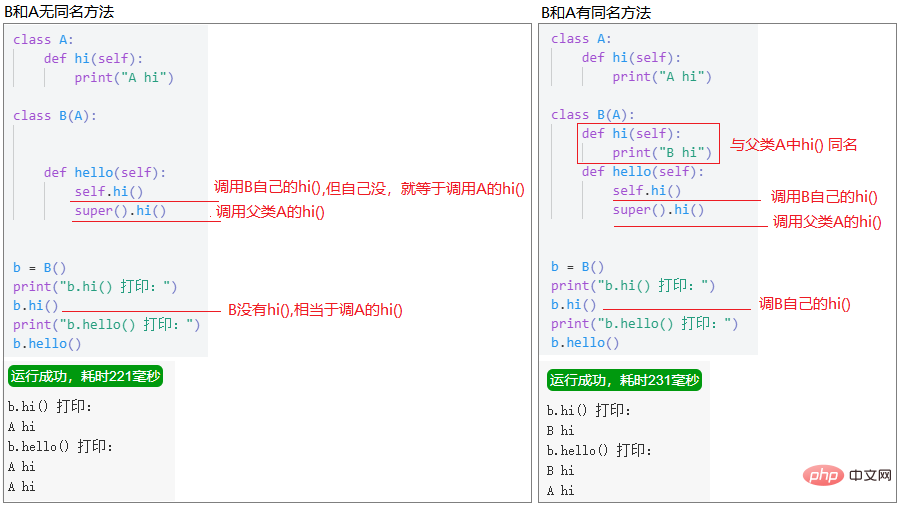
需要注意的是python2、3的super写法稍有不同。
1.2, __init__()
__init__()는 생성 시 "자동으로 호출됨"에서 Python의 생성자입니다. 객체.
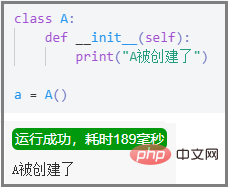
定义类时可以不写init方法,系统会默认创建, 你也可以写一个,让你的类在创建时完成一些“动作”。
1.3, super().__ init __()
하위 클래스 B와 상위 클래스 A가 모두 초기화 메서드를 작성한 경우
그러면 A의 초기화 메서드가 B로 덮어쓰여집니다. A의 init 메소드를 호출하려면 super를 사용하여 호출해야 합니다.
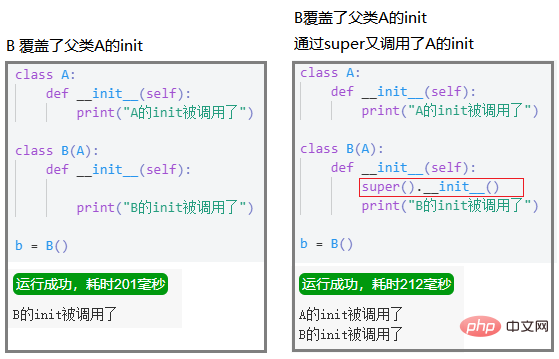
물론 B 내에서는 super를 사용하여 부모 클래스의 메서드를 호출하는 것 외에도 부모 클래스 이름을 사용하여 호출할 수도 있습니다. 예:
class B(A):
def __init__(self):
A.__init__(self)
print("B init")1.3.1 "override"에 대한 질문 "
어떤 분들은 오해하실 수도 있어요" "커버링"은 "커버링"하면 그런게 없다는 뜻인데 왜 아직도 슈퍼를 통해 호출이 가능한 걸까요?
덮어쓴다고 해서 A의 메서드가 여전히 존재한다는 의미는 아니지만 B 내부에서 super를 호출해야 합니다.
例: A里写了一个方法hi(), B继承自A, B里也写了一个方法hi()。 B的对象在外部调用hi(), 就只能调用B里面写的这个hi()。 想通过B调用A的hi(),只能在B内部用super().hi()调用。
class A:
def hi(self):
print("A hi")
class B(A):
def hello(self):
print("B hello")
b = B()
b.hi() # B里没有写hi(),这里调用的是继承自A的hi()
------------------------------------------------------------------
class A:
def hi(self):
print("A hi")
class B(A):
def hi(self):
print("B hi")
b = B()
b.hi() # 这里调用的就是B自己的hi()
------------------------------------------------------------------
class A:
def hi(self):
print("A hi")
class B(A):
def hi(self):
super().hi() # 通过super调用父类A的hi()
print("B hi")
b = B()
b.hi() # 这里调用的就是B里面的hi()2 python2와 3의 super() 차이점
Python3.x와 Python2.x의 차이점: Python 3에서는 super(Class, self).xxx 대신 super().xxx를 직접 사용할 수 있습니다.
예:Python3.x 예:python3은 다음과 같이 직접 작성됩니다: super().__init__()
python2는 다음과 같이 작성되어야 합니다: super(class name, self).__init__()
class A:
def add(self, x):
y = x+1
print(y)
class B(A):
def add(self, x):
super().add(x)
b = B()
b.add(2) # 3Python2.x 예:
#!/usr/bin/python
# -*- coding: UTF-8 -*-
class A(object): # Python2.x 记得继承 object
def add(self, x):
y = x+1
print(y)
class B(A):
def add(self, x):
super(B, self).add(x)
b = B()
b.add(2) # 33. 상속 순서에 관하여최하위 레벨: 먼저 상위 클래스 A를 작성합니다class A:
def __init__(self):
print('A')두 번째 레벨: B, C, D가 Aclass B(A):
def __init__(self):
print('B')
super().__init__()
class C(A):
def __init__(self):
print('C')
super().__init__()
class D(A):
def __init__(self):
print('D')
super().__init__()에서 상속받도록 합니다세 번째 레벨: E, F와 G는 상속class E(B, C):
def __init__(self):
print('E')
super().__init__()
class F(C, D):
def __init__(self):
print('F')
super().__init__()
class G(E, F):
def __init__(self):
print('G')
super().__init__() G의 상속 순서를 보면
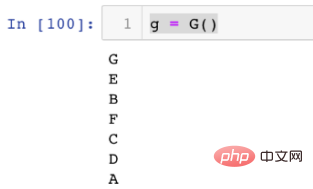
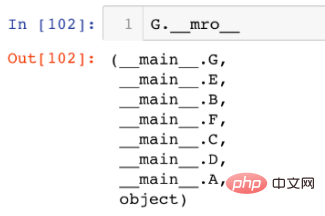

| 상속된 콘텐츠 | |
|---|---|
| 은 모두 | |
| 을 상속합니다. | 상속되지만 재정의됩니다. 초기화 방법을 얻었습니다|
| 상속하되 init 메서드를 재정의하고 init |
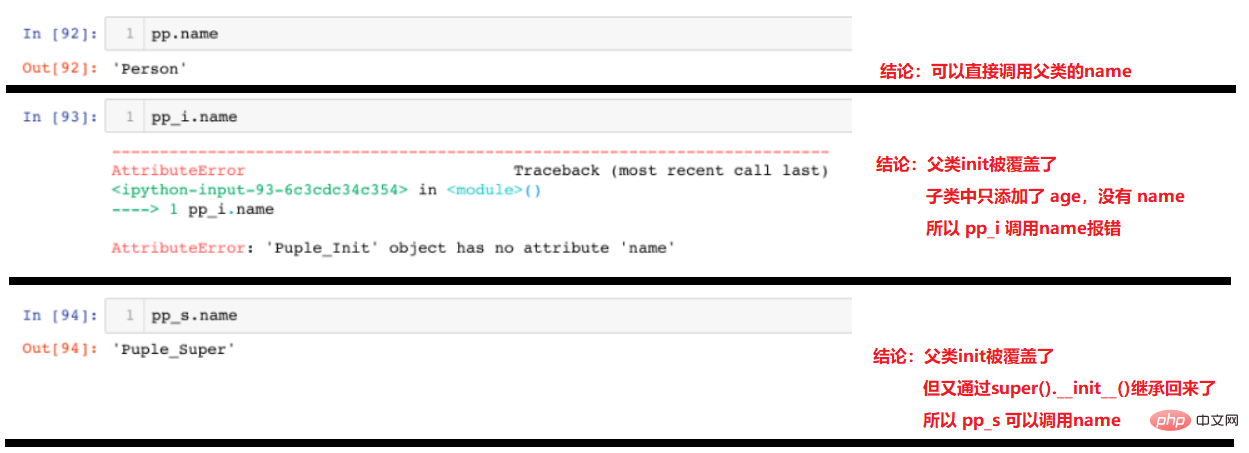

위 내용은 Python에서 super() 함수의 __init__() 메서드를 사용하는 방법은 무엇입니까?의 상세 내용입니다. 자세한 내용은 PHP 중국어 웹사이트의 기타 관련 기사를 참조하세요!
성명:
이 기사는 yisu.com에서 복제됩니다. 침해가 있는 경우 admin@php.cn으로 문의하시기 바랍니다. 삭제

